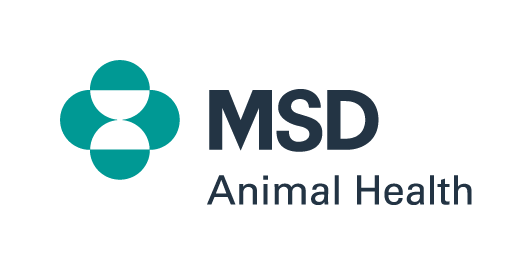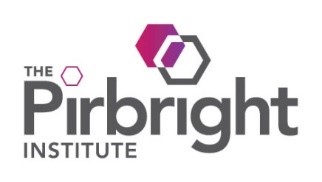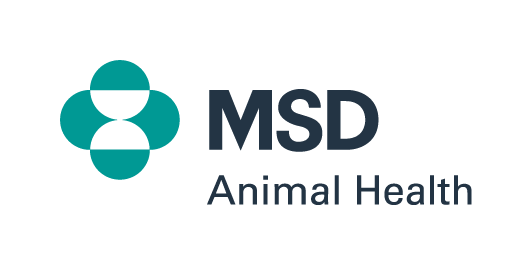Pirbright Grants Licence for New Foot-and-Mouth Disease Vaccine
The Pirbright Institute and its research partners have granted MSD Animal Health an exclusive commercial licence for a new, effective and affordable vaccine to protect livestock against several serotypes of foot-and-mouth disease virus (FMDV).

The new vaccine is more stable than current foot-and-mouth disease (FMD) vaccines and is less reliant on a cold-chain during vaccine distribution – characteristics that give the vaccine greater potential for helping to relieve the burden placed on regions where the disease is endemic in large parts of Africa, the Middle East and Asia.
The vaccine has been developed over the years from basic science to animal trials as a result of long-standing collaborations between Pirbright, the University of Oxford, Diamond Light Source, the University of Reading and MSD Animal Health, a division of Merck & Co., Inc., Kenilworth, N.J., USA, who will now be taking forward the new technology into development, registration and manufacturing. This work has been supported by funding from Wellcome to speed up commercialisation.
The granting of the licence is an important milestone in years of research led by Professor Bryan Charleston, Director at Pirbright, Professor David Stuart, Life Sciences Director at Diamond Light Source and MRC Professor in Structural Biology at the University of Oxford and Professor Ian Jones, University of Reading, to develop a new synthetic vaccine designed to trigger optimum immune responses without the need to grow live infectious virus for vaccine production. It also highlights the confidence MSD Animal Health has in the new vaccine’s effectiveness, safety and viability for commercial production.
The vaccine is made of small synthetic protein shells, called ‘virus like particles’ (VLPs), which mimic the FMDV outer shell and so stimulate an immune response. Unlike other inactivated FMD vaccines, the VLPs do not require high containment facilities for production and have been engineered to remain stable up to temperatures of 56°C, reducing reliance on cold-chain transport and storage. These two factors will revolutionise vaccine deployment in areas of Africa and Asia, where the disease continues to circulate.

Regions where the disease is not endemic could also benefit since the VLPs lack specific viral proteins, facilitating differentiation between vaccinated and infected animals (DIVA) such that trade would not be hindered by a vaccination programme and this protection would eliminate the need for mass culling in the event of an outbreak. Importantly, this method of making and stabilising vaccines could potentially be employed in the fight against other viruses from the same family, including polio.
FMD not only impacts animal welfare, but the wellbeing of those reliant on susceptible animals for produce and trade. This vaccine will help to address the current shortfall in vaccine availability, which will have a huge impact on the economic prosperity of those countries blighted by the disease, as well as improving the livelihoods of those living in affected regions.
Professor Bryan Charleston, Director of The Pirbright Institute, said: “We are proud and excited that our research has resulted in a vaccine that is undergoing commercial development and will have a major impact on the health and wellbeing of those people whose livelihoods have been most severely affected by this devastating disease. The vaccine’s properties allow for a greater degree of flexibility during production, storage and transportation, which will result in a more affordable solution and therefore better access to those living in areas such as Asia and Africa.”
Dr. Erwin van den Born, R&D Project Leader at MSD Animal Health, remarked: “MSD Animal Health is dedicated to fostering innovation that will help countries better respond to FMD outbreaks. FMD causes enormous economic losses to the livestock industry, resulting from morbidity in adult animals, reduced animal productivity, mortality in young stock and restriction to international trade in animals and animal products. We are pleased to be part of the solution in working with the research collaborators on new technology to quickly adapt vaccines to emerging viruses.”
Professor Ian Jones, Professor of Virology at the University of Reading, commented: “Many successful findings at the bench fail to progress to commerce as their manufacture is problematic. It is particularly gratifying therefore that MSD Animal Health have engaged fully with our recombinant vaccine for foot-and-mouth disease. I look forward to seeing their industrial know-how catapult the product into the commercial arena to provide a cost effective and safe vaccine to the benefit of industrial and subsistence farmers alike.”
Professor David Stuart, Life Sciences Director at Diamond Light Source and MRC Professor in Structural Biology at the University of Oxford, adds: “We have been working to achieve something close to the holy grail of vaccines. Instead of traditional methods of vaccine development, using infectious virus as its basis, our team synthetically created empty protein shells to imitate the protein coat that forms the strong outer layer of the virus. Diamond’s visualisation capabilities and the expertise of Oxford University in structural analysis and computer simulation, enabled us to visualise in detail something invisible in a normal microscope and to enhance the design, atom by atom, of the empty shells. The key thing is that unlike the traditional FMDV vaccines, there is no chance that the empty shell vaccine could revert to an infectious form. The licence that has just been granted suggests that the work will have a broad and enduring impact on vaccine development.”
Bethan Hughes, from Wellcome, said: “We are delighted that our long-term funding commitment to this programme is reaching fruition. This technology has the potential to transform the production of foot-and-mouth disease vaccines globally and could have a huge impact on the lives of livestock farmers and their families in countries where the disease is endemic in Africa and Asia.”
Defra Chief Veterinary Officer, Christine Middlemiss, said: “This is a major milestone in tackling foot-and-mouth disease in the developing countries where it is endemic. The increased robustness of this new vaccine has the potential to not only protect livestock, but to transform the lives of people whose livelihoods have previously been threatened by this disease. Many people have worked for years to get to this point, and I am delighted to see the vaccine receive its commercial licence.”
Notes to editors
The vaccine VLPs do not contain genetic material and are propagated in insect cells, removing the need for high containment production. Initial research for the vaccine was funded by the Department for Environment, Food and Rural Affairs (Defra), after which Wellcome continued to fund the programme to develop the vaccine for low and middle income countries. Visit the Pirbright website for more information about foot-and-mouth disease. For more information please contact communications@pirbright.ac.uk Tel: +44 (0) 1483 231120.
Follow The Pirbright Institute on social media: Facebook Twitter
About The Pirbright Institute
The Pirbright Institute is a world leading centre of excellence in research and surveillance of virus diseases of farm animals and viruses that spread from animals to humans. Based in the UK and receiving strategic funding from the Biotechnology and Biological Sciences Research Council (BBSRC UKRI), the Institute works to enhance capability to contain, control and eliminate these economically and medically important diseases through highly innovative fundamental and applied bioscience.
With an annual income of nearly £32.1 million from grants and commercial activity, and a total of £14.3 million strategic investment from BBSRC during 2017-2018, the Institute contributes to global food security and health, improving quality of life for animals and people.
For more information about The Pirbright Institute see: www.pirbright.ac.uk.
About MSD Animal Health
For more than a century, MSD, a leading global biopharmaceutical company, has been inventing for life, bringing forward medicines and vaccines for many of the world’s most challenging diseases. MSD Animal Health, a division of Merck & Co., Inc., Kenilworth, N.J., USA, is the global animal health business unit of MSD. Through its commitment to The Science of Healthier Animals®, MSD Animal Health offers veterinarians, farmers, pet owners and governments one of the widest range of veterinary pharmaceuticals, vaccines and health management solutions and services as well as an extensive suite of digitally connected identification, traceability and monitoring products. MSD Animal Health is dedicated to preserving and improving the health, well-being and performance of animals and the people who care for them. It invests extensively in dynamic and comprehensive R&D resources and a modern, global supply chain. MSD Animal Health is present in more than 50 countries, while its products are available in some 150 markets. For more information, visit www.msd-animal-health.com/ or connect with us on LinkedIn and Twitter.
About Diamond Light Source
Diamond Light Source is the UK’s national synchrotron, providing industrial and academic user communities with access to state-of-the-art analytical tools to enable world-changing science. Shaped like a huge ring, it works like a giant microscope, accelerating electrons to near light speeds, to produce a light 10 billion times brighter than the Sun, which is then directed off into 33 laboratories known as ‘beamlines’. In addition to these, Diamond offers access to several integrated laboratories including the Electron Bio-imaging Centre (eBIC) and the Electron Physical Science Imaging Centre (ePSIC).
Diamond serves as an agent of change, addressing 21st century challenges such as disease, clean energy, food security and more. Since operations started, more than 14,000 researchers from both academia and industry have used Diamond to conduct experiments, with the support of approximately 700 world-class staff. More than 8,000 scientific articles have been published by our users and scientists.
Funded by the UK Government through the Science and Technology Facilities Council (STFC), and by the Wellcome Trust, Diamond is one of the most advanced scientific facilities in the world, and its pioneering capabilities are helping to keep the UK at the forefront of scientific research.
For more information visit www.diamond.ac.uk.
